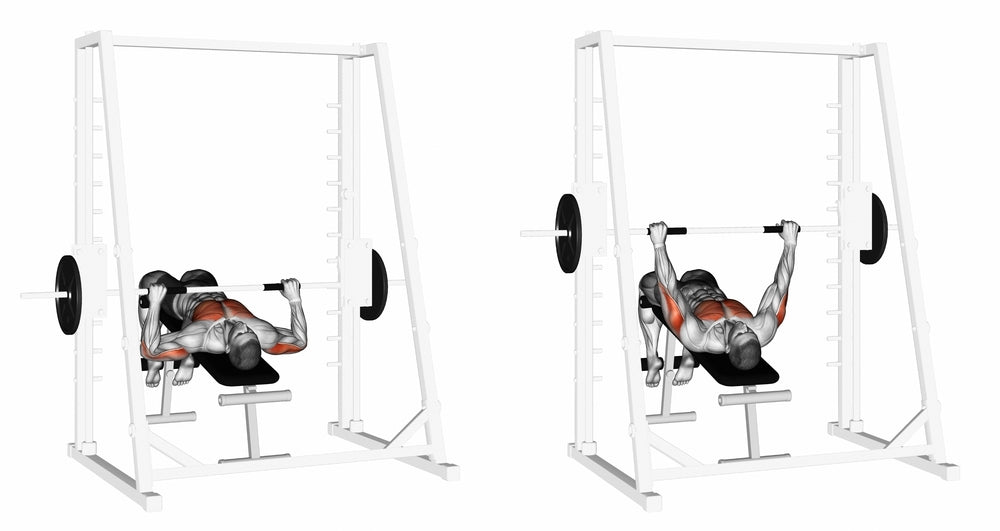Kinesiology of Exercise
Incline and Decline Press
To further isolate the upper and lower portions of the pectoralis major, you should do the incline (for the upper pecs) and decline (for the lower pecs) presses. To do these exercises, you must use an incline and decline bench for effective execution.

Major Muscles and Actions Involved
Incline Press
The muscles and actions involved in this exercise are a cross between the bench press and the overhead press. In essence, the movement is diagonal flexion, which uses some of the muscles that are involved in the bench press and the overhead press. Thus, rather than describing these muscles and actions again, just remember that the greater the incline, the closer the exercise approaches the muscles and actions in the overhead press, and the lower the incline, the more the exercise approaches the muscles and actions in the bench press.

Major Muscles and Actions Involved
Decline Press
The same concept applies here. In the decline press you do diagonal extension, which is made up of a combination of the bench press and the dip.

Sports Uses
The sports uses are the same as for the bench press and the overhead press. Note also that the incline press is most important in the shot put, discus, and hammer throw, as it more closely duplicates the specific actions in these sports. For the decline press, the sports uses are the same as for the dip and the bench press. The decline press is very important in downward pushing actions, which are used in football, swimming (especially the back stroke), water polo, synchronized swimming, flying rings, and basketball. The movements of the incline and decline presses are used in bodybuilding for full development of the pectoralis major.
Exercise Analysis
- If you use a narrower grip and keep your elbows in while executing the incline press, the stress falls fairly equally on the upper pectorals, the anterior deltoid, and the triceps. If you use a wider grip and keep your elbows out during execution, you will stress the upper pectoralis major and anterior deltoid even more. The triceps is less involved. If using these different grips does not feel natural to you, use dumbbells and vary the pathways.
- In execution of the incline and decline presses, you should always use spotters, especially to assist in the transition from the down phase to the up phase. Bouncing the barbell off the chest can severely injure the rib cage. Moreover, by bouncing the weight, you do not get full use of the muscles to move the weight, and you do not use the muscle stretch-shorten effect.
- By quickly switching in the down position, you involve the stretch-shorten effect, which allows you to use the energy from the eccentric contraction in the concentric contraction. This makes the movement more efficient and allows you to handle more weight.
- For variety you can do incline and decline presses with dumbbells, which allow you to change the positioning of your hands that allows you to get different kinds of development. With a neutral grip, it is much easier to keep your elbows in close to your sides and to keep the movement of your arms in line with your body. With a pronated grip and holding your elbows out to the sides, you can stress more of the pectoral muscles and less of the triceps.
- For further analysis check out our premium Kinesiology of Exercise EBooks.
